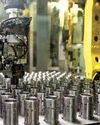IT TOOK 40 YEARS to build what was the Silicon Valley Bank (SVB) – the darling of the tech world. It took just 40 hours of depositors’ distress signals to withdraw deposits prematurely, to bring it down to bankruptcy. What went wrong for a bank who was the darling of the startup ecosystem, and whose clients were half of the US’s venture-capital backed technologies and life sciences companies?
The business of well-run banks is simple – have a long term business model, with some short-term assets. Their assets and liquidity cover any liabilities that are due to mature. They get additional capital to cover business losses, and liquid assets to cover out-of-turn withdrawals. If all depositors were to withdraw their money at the same time, then the bank would not be able to meet those demands, causing a “bank run”.
So, here are ten lessons from the collapse of the Silicon Valley Bank:
Lesson 1: Bank-runs are possible, even in well-run banks. The Federal Reserve, the central banker of the US, hawkishly increased interest rates eight times in a year, to fight inflation. This reduced the value of assets held by the bank, and did not appropriately tally with its liabilities.
Lesson 2: Even money at near zero interest rate has a severe cost attached to it. Suddenly with the SVB experience, the US Fed focus is more on financial stability, than on inflation. Something that they can learn from the Reserve Bank of India (RBI), who juggles its multiple roles of inflation-manager, sovereign-debt manager and monetary regulator in charge of financial stability.
This story is from the {{IssueName}} edition of {{MagazineName}}.
Start your 7-day Magzter GOLD free trial to access thousands of curated premium stories, and 9,000+ magazines and newspapers.
Already a subscriber ? Sign In
This story is from the {{IssueName}} edition of {{MagazineName}}.
Start your 7-day Magzter GOLD free trial to access thousands of curated premium stories, and 9,000+ magazines and newspapers.
Already a subscriber? Sign In

MEMORIES & IMPRESSIONS
Ratan Tata was an exceptional human being. He was a visionary leader, esteemed industrialist, and a humanitarian, who left an indelible mark on India and the world.

The Robotaxi Market
The robotaxi market is shaping up to be a high-stakes battleground as tech giants and automakers race to transform urban mobility.

And the Nobel Prize Goes to AI
The recent Nobel Prize T awards to AI pioneers affiliated with Google have sparked a broader conversation about Big Tech's influence on research and the limitations of traditional prize categories.

Ola Electrified
Once considered a trailblazer in India’s electric vehicle (EV) ecosystem, Bhavish Aggarwal’s Ola Electric now faces a major accountability crisis.

Sharp Slide in Industrial Output on Eve of Deepavali
India’s index of industrial production (IIP) saw a sharp reversal in August, contracting by 0.1 per cent, in stark contrast to the 4.7 per cent growth in July, mostly because of significant contractions in mining and electricity generation.

Heralding the Solar Era with Sustainable Electrification
RAJEEV KASHYAP on the economics of solar power, the hurdles in scaling it, and much more

A WELL-GREASED MACHINE
The OmniBook X14 laptop runs on first-generation Snapdragon X Elite, which bets big on Al-enabled productivity and battery life, but falls short when it comes to overall experience, says Deep Majumdar

DO NOT LETA HEALTH CRISIS RUIN YOUR FINANCIAL HEALTH
For a family of four living in a metro, it is recommended to opt for a family floater health insurance plan with a sum insured of at least Rs 15-20 lakh

Disruption Ahead: Beyond Organisation Charts and Structures
ALBERT EINSTEIN FAMOUSLY said, “We cannot solve our problems with the same thinking we used when we created them.

Dr. Rahul Shivajirao Kadam: A Visionary Leader Blending Sustainability, Innovation, And Social Empowerment
We are on the stage of global warming, and these technologies not only help prevent further damage but also leave behind a better environment for future generations.